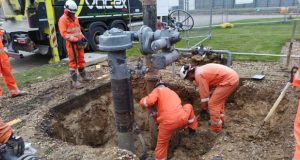While concerns over funding for retrofit projects are widespread, with half (51 per cent) of construction professionals citing cost as a major barrier, new research from BSRIA reveals that budgets are only one part of a much more complex challenge.
Developers are being urged to look beyond budget constraints as the sole obstacle to progress, as research findings from the leading authority in building services testing, intelligence, highlight a more nuanced reality in which energy-saving measures are being frequently overlooked – creating an equally significant, yet more addressable, hurdle in tackling the retrofit challenge.
This reality is underscored by the fact that the Office for Budget Responsibility (OBR) recently estimated that the cost of retrofitting the UK’s housing stock could be up to £803 billion. However, despite this vast figure, only three per cent of the allocated Social Housing Decarbonisation Fund has been spent so far, casting doubt on whether funding alone is truly the main bottleneck when it comes to progress.
Many point to knowledge gaps and regulatory complexities as major obstacles. In fact, BSRIA’s research indicates that 42 per cent of construction professionals believe that complex regulatory compliance is slowing progress. Yet, while the introduction of new standards like PAS 2035 have raised the standards for retrofit projects, its requirements align with the core purpose of retrofitting, representing an opportunity rather than a barrier.
This raises questions around whether the industry is taking the correct approach, with different views being held across the sector. While a quarter of professionals cite the integration of new technologies as a key blocker to the retrofit challenge, a similar number (26 per cent) of professionals advocate for a fabric-first approach as the initial step in retrofit projects. However, given that the Energy Saving Trust reports that around 75 per cent of a building’s heat energy can be lost through its fabric – with walls alone accounting for approximately 30 per cent of losses, roofs for 25 per cent, floors for 10 per cent and windows for 18 per cent – using strategies that put fabric first should be a fundamental consideration.
This suggests large numbers of construction professionals could be overlooking the substantial gains that can be made by first improving the thermal envelope of the building.
Tom Garrigan, Executive Director at BSRIA, commented: “Net zero will come at a cost, that’s understood. The real challenge is ensuring that investment delivers maximum value by making informed, evidence-based decisions. Some decarbonisation steps can be taken at no cost, and while net zero is the target, small positive changes in how we operate and control our buildings can begin to pave the way. When implementing any fabric performance measures, adopting a whole building approach ensures all elements of the building’s building fabric work together, providing improved comfort, lower energy bills and a healthier living environment.
“Before investing in renewable energy systems, buildings should first be made ‘low carbon technology ready’, as part of a staged approach on their decarbonisation journey.”
Despite these challenges, the sector remains optimistic. BSRIA’s research found that 76 per cent of respondents believe retrofit solutions will deliver long-term performance, lasting over 20 years. Sixty-two per cent said that retrofit projects offer greater benefits than new builds when it comes to meeting Net Zero, a view shared by 79 per cent of architects, 68 per cent of builders, and 65 per cent of engineers.
Garrigan continued: “Retrofitting buildings across the UK is crucial to achieving the government’s Net Zero targets, and it’s clear that the industry recognises the value of this. While budgets do pose challenges, accelerating retrofit at scale requires us to close the knowledge gap, understand and demonstrate compliance, and focus on fundamental energy efficiency principles.”





